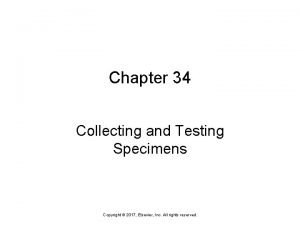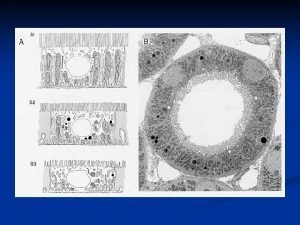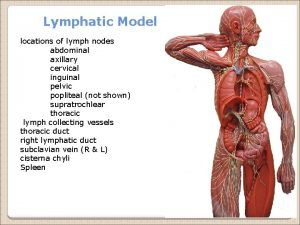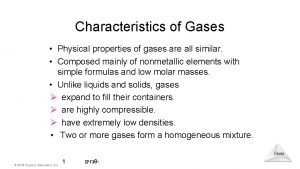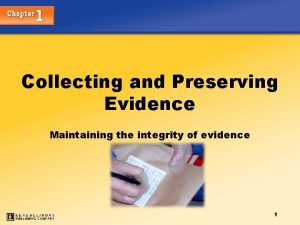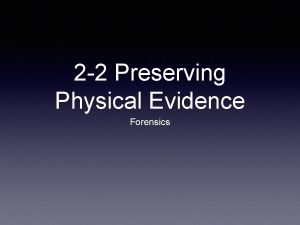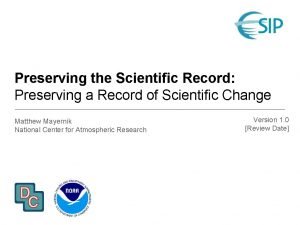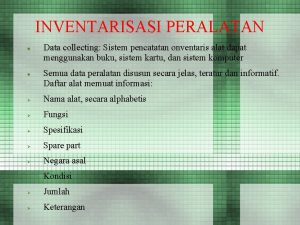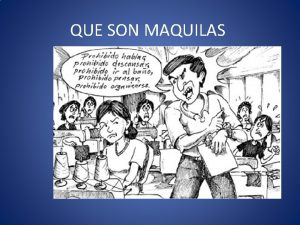Ar SON Searching Preserving and Collecting Evidence from




























- Slides: 28

Ar. SON Searching, Preserving and Collecting Evidence from an Arson Scene

Accelerants used in arson • Most arsons are initiated by petroleum distillates such as gasolines and kerosene.

Timeline of investigation • It is important for the arson investigator to begin examining a fire scene as soon as the fire has been extinguished because most arsons are started with petroleum – based – accelerants that may evaporate within a matter of days or even hours.

Timeline of investigation • Once cleaning efforts begin, it is impossible to conduct a meaningful investigation of the fire scene.

Locating the fire’s origin • The most productive area to search for accelerants at a suspected arson fire is the fire’s origin. • This area will most likely have an accelerant or ignition device.

Telltale signs of arson • 1. Separate and unconnected fires. • 2. Use of “streamers” – such as a trail of gasoline or paper – to spread the fire from one area to another. • 3. Presence of containers capable of holding an accelerant. • 4. Finding potential ignition devices. • 5. Irregular – shaped pattern on the floor or on the ground caused by pouring an accelerant onto the surface.

Origin of the fire • The probable origin of a fire will likely be located closest to the lowest point that shows the most intense characteristics of burning.

Factors that can cause a fire to deviate from normal behavoir • 1. Prevailing drafts and winds. • 2. Secondary fires due to collapsing floors and roofs. • 3. The physical arrangement of the burning structure. • 4. Stairways and elevator shafts. • 5. Holes in the floor, wall or roof. • 6. The effects of the firefighters in suppressing the fire.

Characteristic of fire

Processing the crime scene • When at the scene of an active fire, photographs and notes are taken. These photographs can aid in the process of determining if accelerants are present.

Characteristics of fire • Typically a V-shaped pattern will form against vertical walls because normally a fire tends to move upward and away from the lowest point that shows the most intense characteristics of burning.

Burn patterns • One common burn pattern is known as the pour pattern. • If an accelerant was used at a scene, even after the fire has been put out, the outline of the accelerant will remain.

Hydrocarbon detectors • Investigators use a portable hydrocarbon detector known as sniffers to look for traces of accelerants. Dogs are also used to help sniff out accelerants.

Traces of accelerants • Even after intense fires traces of accelerants can still be found because some of it will likely seep into porous surfaces such as cracks in the floor, upholstery, rags, plaster, wallboards and carpet.

Traces of accelerants • In addition, when a fire is extinguished with water, volatile fluids may evaporate more slowly as water cools and covers materials through which the fluid may have soaked.

Collection of arson evidence • Porous materials at the suspected point of origin of a fire should be collected and stored in airtight containers.

Collection of arson evidence • When collecting samples at a suspected arson, two or three quarts of ash and soot debris should be collected.

Collected of arson evidence • Various sizes of paint cans suitable for collecting debris at fire scenes can be used.

Substrate control • Laboratory tests may be made on unburned control material to analyze the breakdown products caused by the materials exposure to intense heat during the fire.

Substrate control • Because common materials such as plastic floor tiles, carpet, linoleum and adhesive can produce volatile hydrocarbons when they are burned, these breakdown products might be mistaken for an accelerant.

Igniters and other evidence • The most common igniter is the match.

Other types of igniters • 1. Burning cigarettes. • 2. Firearms • 3. Ammunition • 4. Mechanical Match Striker • 5. Electrical Spark Devices • 6. Molotov Cocktail

Other evidence collected • Clothing of the suspected perpetrator should always be taken.

Analysis of flammable residues • Gas Chromatography is most reliable instrument for detecting and characterizing flammable residues. • The gas chromatograph separates the hydrocarbon components of these liquids and produces chromatographic pattern characteristics of a particular petroleum product.

The headspace technique • To separate the accelerant from the debris criminilists use the headspace technique. • In the headspace technique, an airtight container holding debris from the fire scene is heated, vaporizing any volatile residue present in the debris and trapping the vapor in the container’s enclosed airspace. • The vapor is removed by a syringe and analyzed through gas chromatography.

The headspace technique • By comparing select gas chromatographic peaks recovered from fire scene debris to known flammable liquids, a forensic analysis may be able to identify the accelerant used to initiate the fire.

Vapor concentration • In order to get large amount of vapors from a container, crime laboratories invented a method called vapor concentration. • During this the vapor enclosed in the container is exposed to charcoal, a chemical absorbent, where it is trapped for later analysis.

Gas chromatography / mass spectrometry • Sometimes due to the mixing of accelerants a gas chromatograph fails to show a known accelerant. • When this occurs a chromatograph is passed through a mass spectrometer. • A mass spectrometer fragments the components into ions. It is basically a filter for certain types of ions. If certain types of accelerants are present they can be filtered out.
 Individual evidence can have probative value.
Individual evidence can have probative value. Ecology preserving the animal kingdom
Ecology preserving the animal kingdom Chapter 8 preserving your credit
Chapter 8 preserving your credit Preserving your credit
Preserving your credit âq1
âq1 Orthogonal matrices
Orthogonal matrices Preserving statistical validity in adaptive data analysis
Preserving statistical validity in adaptive data analysis Structure-preserving neural style transfer
Structure-preserving neural style transfer Preserving food
Preserving food Nuzhat sultana
Nuzhat sultana Chapter 34 collecting and testing specimens
Chapter 34 collecting and testing specimens Collecting and displaying data
Collecting and displaying data Collecting information and forecasting demand
Collecting information and forecasting demand Market research demand forecasting
Market research demand forecasting What is primary sources
What is primary sources Primary evidence vs secondary evidence
Primary evidence vs secondary evidence Primary evidence vs secondary evidence
Primary evidence vs secondary evidence Primary evidence vs secondary evidence
Primary evidence vs secondary evidence Primary evidence vs secondary evidence
Primary evidence vs secondary evidence How can class evidence have probative value
How can class evidence have probative value Class evidence vs individual evidence
Class evidence vs individual evidence Individual vs class evidence
Individual vs class evidence The ecological fallacy
The ecological fallacy Reabsorption
Reabsorption Ductnn
Ductnn Internal nares
Internal nares Mathsbot differentiated
Mathsbot differentiated Coupon collecting problem
Coupon collecting problem Collecting gas over water
Collecting gas over water










